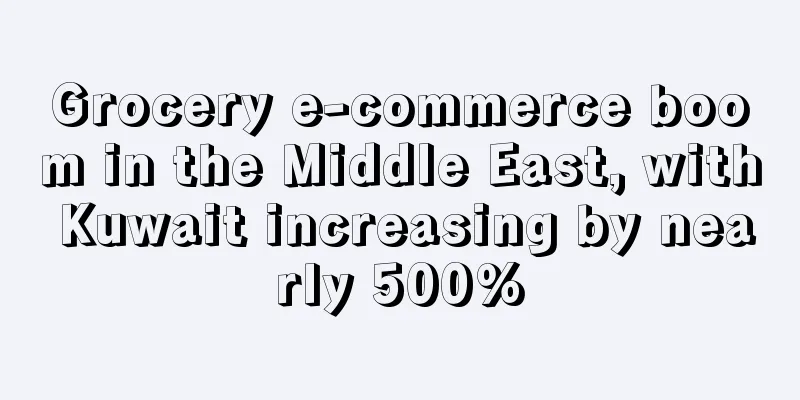Grocery e-commerce boom in the Middle East, with Kuwait increasing by nearly 500%

|
Grocery e-commerce has been one of the slowest growing e-commerce sectors in the Middle East, but due to the positive impact of the epidemic, grocery e-commerce has regained new vitality. According to RedSeer data, the size of Kuwait's grocery e-commerce market exceeded US$500 million in 2020 , a figure of only US$100 million in 2019, an increase of about 450% . RedSeer expects Kuwait's grocery e-commerce market to grow to US$700 million by the end of 2021.
Sandeep Gandiwalla, head of consulting at RedSeer Middle East, said: “The rapid growth of Kuwait’s grocery e-commerce market last year was mainly due to the increase in local online consumers and the improvement of the online channel supply chain.”
He also said that the COVID-19 pandemic was the core driving force of this phenomenon. In early 2020, lockdown measures and the risk of infection made online groceries a necessity and also cultivated a group of loyal online grocery consumers. The familiarity with new online shopping channels and the influx of people helped boost the growth momentum of e-commerce last year.
The Kuwaiti market has also responded positively to consumer changes. For example, Drop, TONS, Carrefour and Deliveroo have all updated their products and services to compete with existing online retailers such as Jumia, Sinbad, Talabat and Lulu.
“These new players are one of the catalysts for the rapid growth of the grocery e-commerce market as they bring diversification, better delivery experience and improve their last-mile logistics capabilities,” Ganediwalla said.
Of course, with the exception of Kuwait, grocery e-commerce has grown across the Middle East. According to another RedSeer report from October last year, the grocery e-commerce markets in the UAE and Saudi Arabia both doubled in 2020. Overall, the UAE and Saudi Arabia grocery e-commerce markets are worth $1.1 billion and $430 million, respectively. In terms of market penetration, Kuwait is far ahead of Saudi Arabia and slightly behind the UAE.
Ganediwalla believes that the combination of a strong consumer base and rising average order values will continue to grow in Kuwait’s grocery e-commerce market. In addition, online grocery retailers are also working hard to solve consumer pain points, which will help maintain the growth trend. middle East Kuwait E-commerce |
>>: E-commerce explosion drives warehouse construction boom in Canada
Recommend
What is 3C Certification? 3C Certification Review, Features
3C certification is the abbreviation of China Com...
What is k-peppermint? k-peppermint Review, Features
k-peppermint is an online website focusing on kitc...
What is Oktopost? Oktopost Review, Features
Oktopost is a social media management platform des...
What is snaptrade? snaptrade Review, Features
<span data-docs-delta="[[20,{"gallery"...
Awesome! A cross-border seller sold 180 million yuan worth of goods on a niche platform in half a year
Recently, the cross-border e-commerce giant Zhiou...
The transaction volume in the first half of the year increased by 40% year-on-year, and the Korean fashion platform Musinsa grew rapidly
At present, the online fashion industry in South ...
With over 260,000 SKUs, Chinese online shopping platforms are conquering the North American market
With the development of global trade, Chinese bra...
What is Zhongchuang Yaoxing ERP? Zhongchuang Yaoxing ERP Review, Features
Zhongchuang Yaoxing ERP ( Shanxi Zhongchuang Yaox...
Benefits are coming! Cainiao International Express and ZiNiao Browser help to make money during the peak season
Peak season is in full swing! Hurry and claim the...
Shopify may restrict Amazon's Buy with Prime payment service
According to foreign media reports, Shopify is ta...
What is Yunku Overseas Warehouse? Yunku Overseas Warehouse Review, Features
Guangzhou Yunku Overseas Warehouse Logistics Co., ...
What is Whale Technology? Whale Technology Review, Features
Whale Technology is a company specializing in prov...
What is BeReal? BeReal Review, Features
Founded in 2020 by French entrepreneur Alexis Bar...
Amazon may need three years to recover from warehouse overexpansion
According to consulting firm MWPVL International,...
10 million Chinese-made magnets recalled due to fatal risks
Magnets are common small parts in daily life , an...









